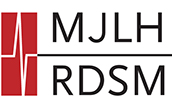Laura Crestohl is a 2nd-year student at McGill University’s Faculty of Law. She holds a Bachelor of Arts in Communication Studies from Concordia University, as well as a Master of Arts in Media Studies from the New School in New York City. Laura’s research interests focus on the intersection of technology, health and the law, including privacy and liability issues.
In the summer of 2012, a moral panic began surrounding the use of “bath salts”, a new synthetic drug popular in Canada, the US and Europe. The drug, so named because its white crystals can resemble Epsom salts, was blamed for causing people to take part in such incredulous acts as cannibalism, self-harm and violence towards others. However, the most surprising fact that the public learned about this new drug was that it was actually perfectly legal, and was being sold online or over the counter in small independent stores such as gas stations and convenience stores. The reputation of these drugs as ‘legal highs’ also gave users a false impression that the drugs were safe to use (Smith and Cardile, e7), when in fact, they can have serious medical effects including tachycardia, hypertension, hyperthermia, seizures, and death (Ross et al, 967).
In efforts to protect citizens from these serious health effects, various legislatures have been struggling to ban these ‘designer drugs’. The seemingly innocuous term ‘bath salts’ can cover a variety of synthetic drugs, made from various combinations of different ingredients. Legislatures are struggling to keep up since once they ban an ingredient, makers of the drugs can adjust the formula to make something not covered by the new laws (Vargas-Cooper). This cat-and-mouse game has been a danger to the public, as users can never be sure of what they are ingesting, and doctors dealing with suspected overdoses are clueless about what chemicals they were dealing with and how to treat their patients. Also, due to the drug’s novelty, it is rarely detected on routine drug screenings (Smith and Cardile, ibid).
As a result, the Canadian government has recently banned one of the most commonly used ingredients in bath salts, methylenedioxypyrovalerone (MDPV), following in the steps of many US states and the UK. MDPV is now recognized in Canada as a schedule I substance under the Controlled Drugs and Substances Act, assigning it the same category as heroin and cocaine. Some worry, however, about how banning a previously legal chemical could affect scientific research and that Canada might have done better by implementing educational efforts and regulating sales of the drug (Soupcoff). Thus, it remains to be seen whether this approach will effectively help protect the safety and health of Canadians, or if the policy will be a detriment by driving the practice underground and unregulated.
REFERENCES
- Edward A. Ross, Mary Watson and Bruce Goldberg, “Bath Salts Intoxication” (8 September 2011) 365;10 N Engl J of Med 967.
- Carin Smith and Anthony Cardile, “Bath Salts as ‘legal high’” (November 2011) 124;11 The American Journal of Medicinee7.
- Marni Soupcoff, “Why Canada Should Not Have Banned ‘Bath Salts’” National Post, 26 September 2012. Online: Full Comment: http://fullcomment.nationalpost.com
- Natasha Vargas-Cooper, “Bath Salts: Deep in the Heart of America’s New Drug Nightmare” Spin Magazine, July/August 2012. Online: http://www.spin.com.

